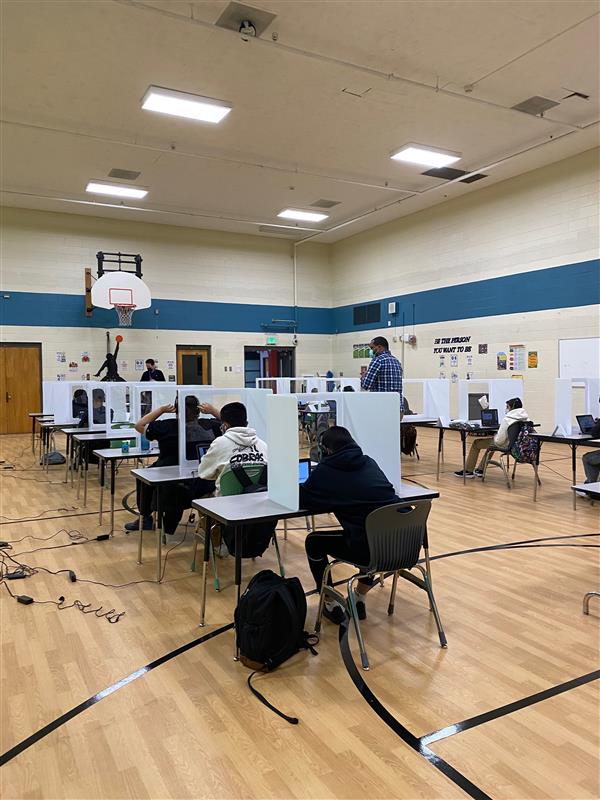Equity in Civic Technology, Privacy & Data
CDT Tech Tales: Leveraging Remote Learning Centers at DSST Public Schools
This post is part of CDT’s storytelling series on EdTech use and student privacy protection during COVID-19. Our experts have spoken with parents, teachers, district leaders, and state officials about how they’ve managed the transition to virtual learning (and in some cases the return of in-person instruction), leveraging data and technology and protecting the civil rights of students along the way. Check out the rest of the stories here.
“We’re hoping we can create more of a community feeling, even in a virtual classroom.”
Kirk Anderson
For Kirk Anderson, Director of Academic and Business Systems at the DSST Public Schools charter school network in Denver, Colorado, the transition to remote learning has meant responding quickly to new information and applying lessons learned on an ongoing basis.

Public Schools charter school network
in Denver, Colorado.
“Like any school right now, we’re really just starting to see the long-term potential and concerns when it comes to remote learning,” he told CDT. “We started to see in April and May, there are some students who aren’t doing as well as they could be during remote learning due to circumstances, learning style, or their own [preferences].”
As soon as they knew school would continue virtually in the fall, DSST implemented a series of changes to meet the needs of their most impacted students. To keep students engaged, they opened a series of remote learning centers for students with learning challenges and those who need significantly more support than possible through virtual learning alone. In these centers, small pods of students complete a percentage of their virtual work together.
“We’ve seen some challenges with the remote learning centers, but we’ve also seen big improvements in engagement,” Anderson said.
DSST also strengthened their supports for teachers this fall, devoting time during professional development sessions to technology training. In the spring, teachers used a wide variety of technology platforms in the classroom. However, they soon realized not every tool met their needs and the needs of their students.
“Teachers turned to DSST to provide a series of tools that would work well in a remote learning environment to keep students engaged,” Anderson said.
The push towards standardizing virtual learning tools across DSST schools allowed them to prioritize tools that engaged students without compromising student data privacy. This included gathering feedback on effective technologies from specific content area teams and then vetting their privacy protections centrally.
As another spring approaches, DSST is focused on nurturing student growth with an emphasis on students who are most likely to fall behind in a virtual setting. They’re continuing to hold regular advisory sessions where one teacher meets with fifteen students every morning to check in.
“We’ve been able to really start standardizing best practices, which will serve us well as this continues,” Anderson told CDT. “We’re hoping that we can create more of a community feeling, even in the virtual classroom.”
In order to provide education leaders and policymakers with guidance towards making equitable decisions about student privacy, CDT recently released a report titled “Protecting Students’ Privacy and Advancing Digital Equity.” Based on original research, the report recommends prioritizing privacy-focused teacher training and proactively communicating with parents about how schools are protecting their children’s data.
Read additional stories in this student privacy series here.


